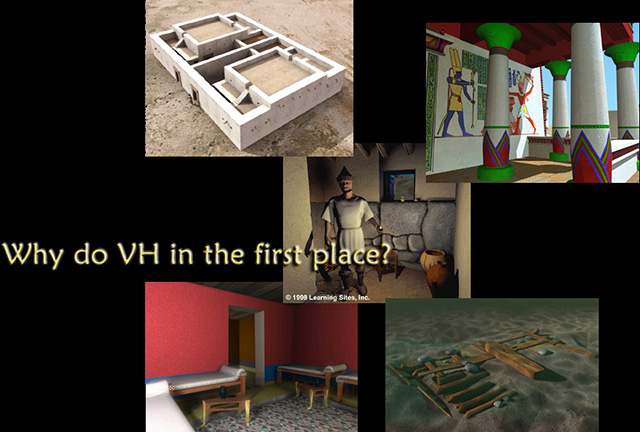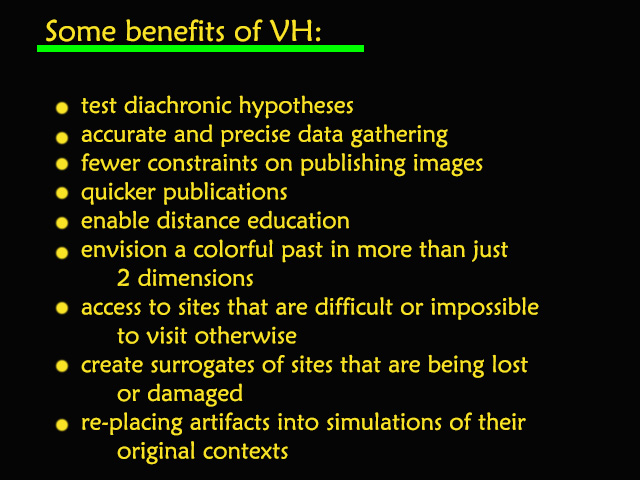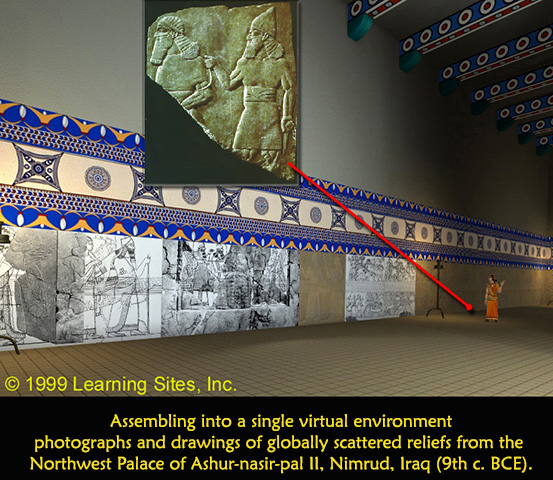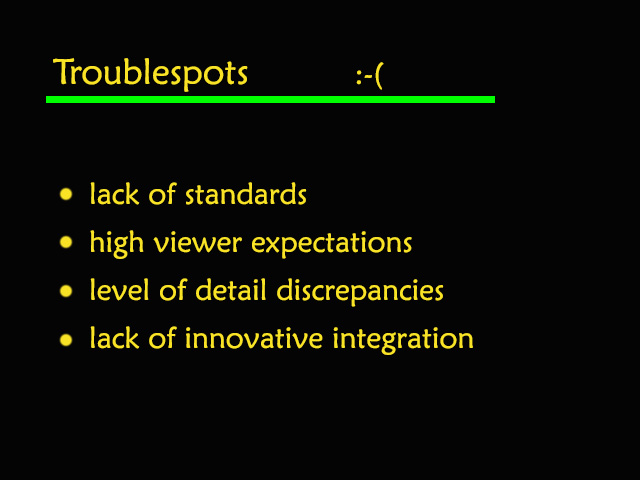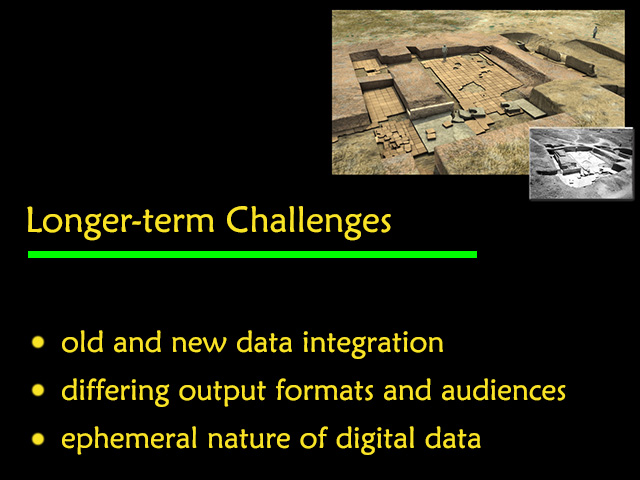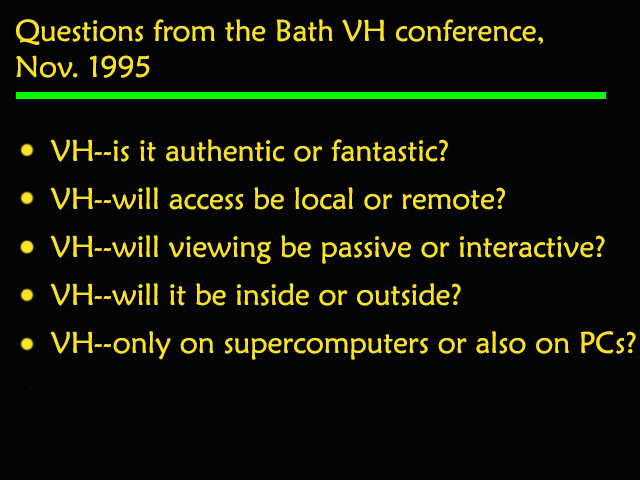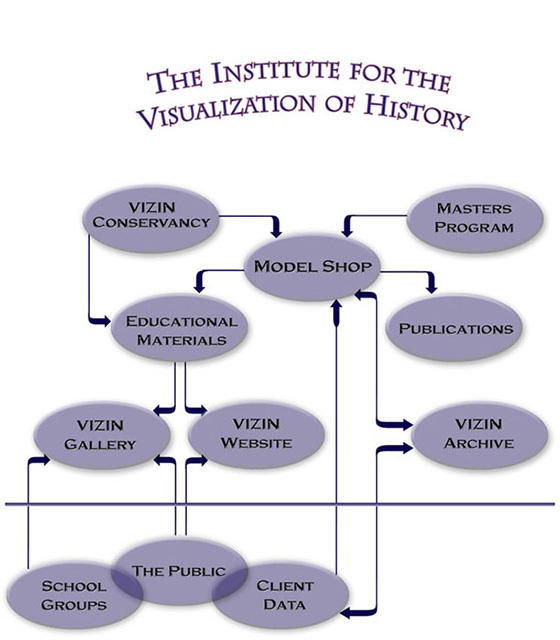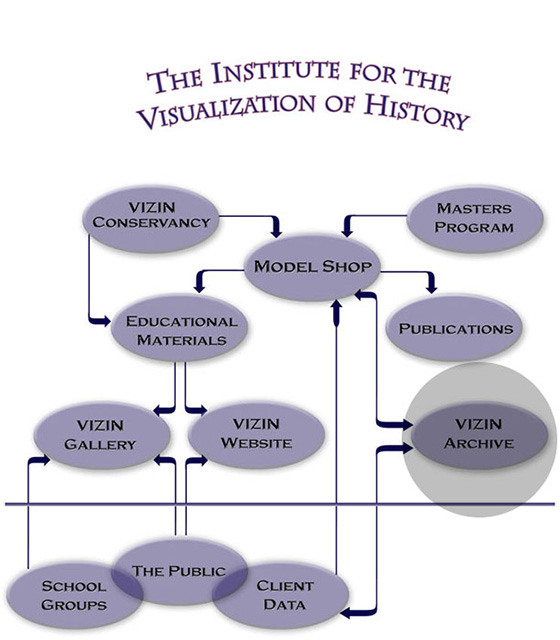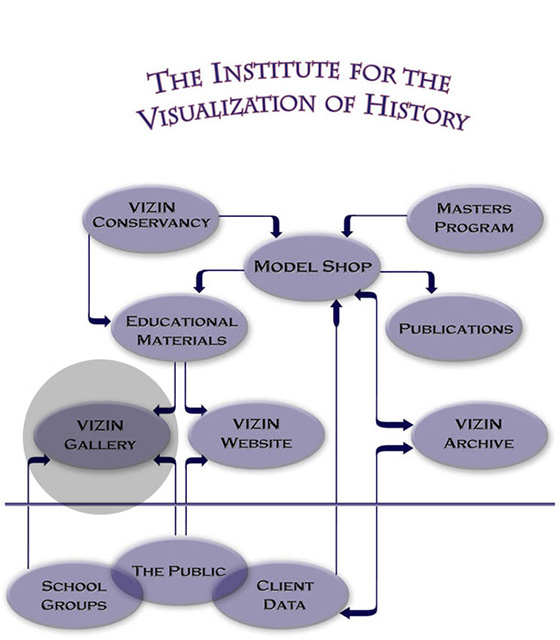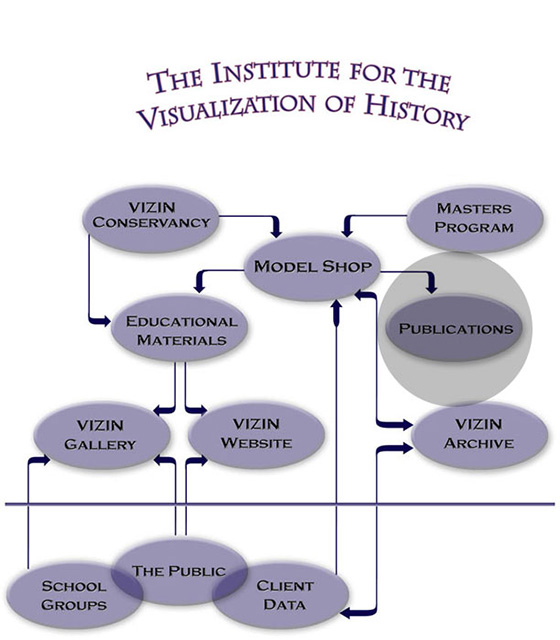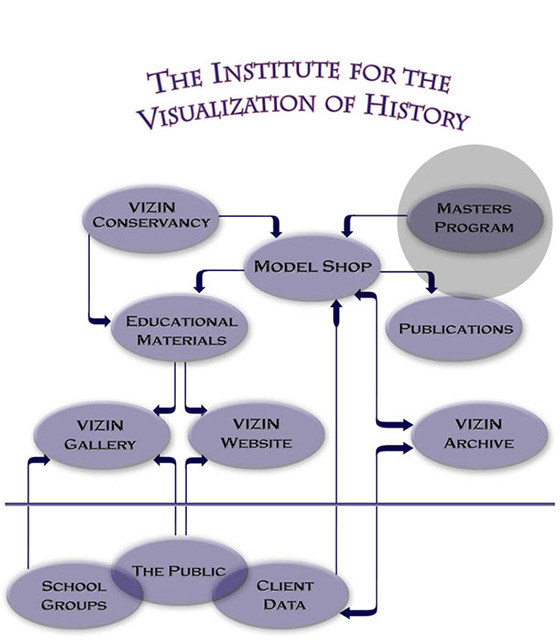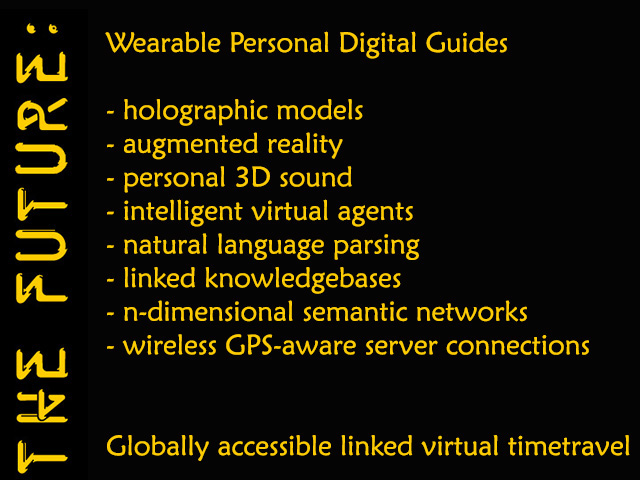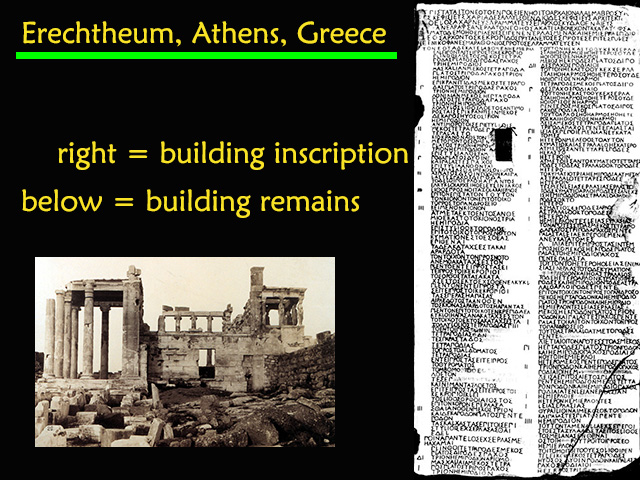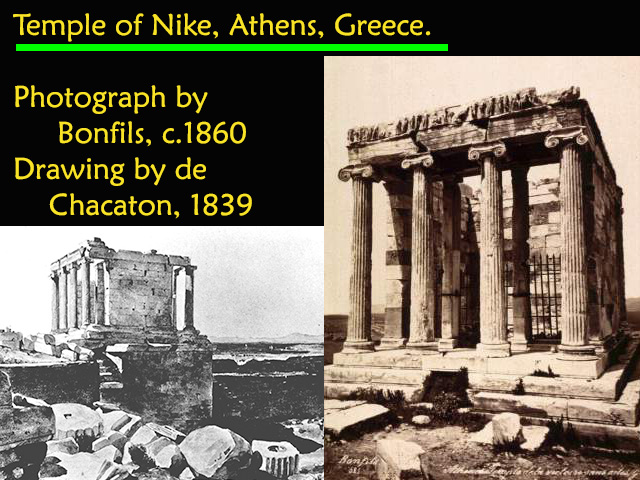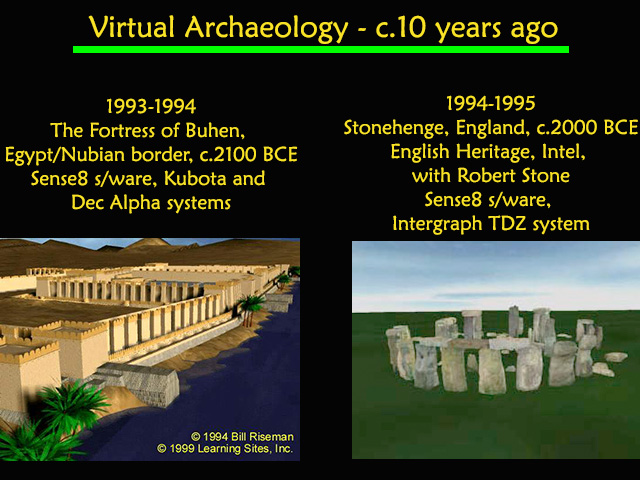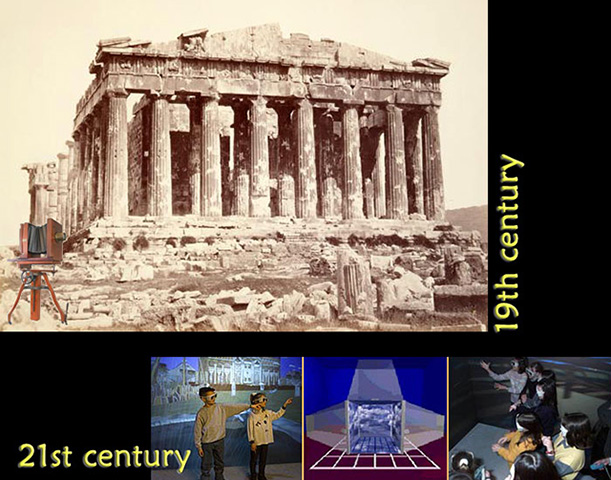 When virtual reality was introduced into archaeology in the early 1990s, some of the concerns about its usefulness were precisely the same reservations that had been expressed regarding the use of photography in archaeology in the mid-19th century (see 19th c. vs. 21st c. archaeology methods at the left; hover over to enlarge). For example: that it is cumbersome and difficult to learn; few people in the field know how to use it effectively; it is expensive to create useful results; and the images cannot be trusted by the archaeological community. But as photography has become a standard, indispensable tool for the discipline, so VR is now becoming.
When virtual reality was introduced into archaeology in the early 1990s, some of the concerns about its usefulness were precisely the same reservations that had been expressed regarding the use of photography in archaeology in the mid-19th century (see 19th c. vs. 21st c. archaeology methods at the left; hover over to enlarge). For example: that it is cumbersome and difficult to learn; few people in the field know how to use it effectively; it is expensive to create useful results; and the images cannot be trusted by the archaeological community. But as photography has become a standard, indispensable tool for the discipline, so VR is now becoming.
By the 1870s, archaeologists were beginning to see the benefits of photography for recording sites, excavations, and artifacts with a level of accuracy and realism not previously possible, and making these images available to a larger audience in an accessible, reproducible form. Since the early 1990s, VR has offered the same benefits for archaeology. And yet much more--VR can tailor visualizations to different end-users, reconstruct elements now lost, and link vast amounts of supporting documentation to the interactive visuals. Clearly, the benefits of VR for archaeology leap far beyond those of any technology previously available.
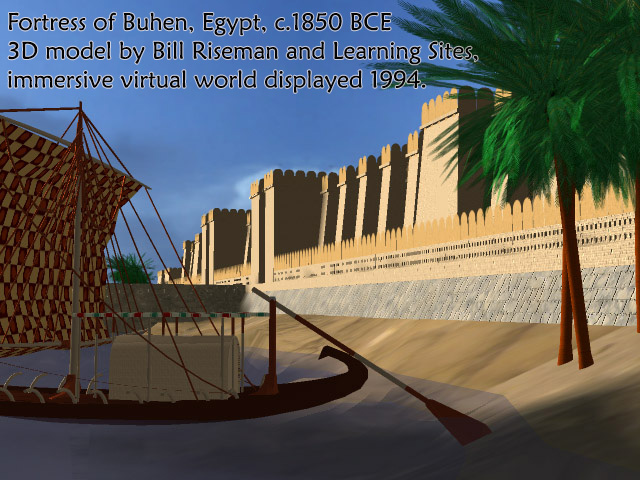
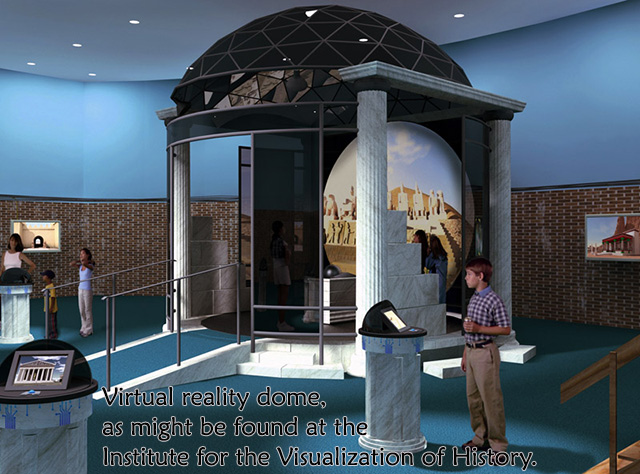 Over the last decade, much has been written about the increasing use of VR in archaeology and heritage projects, from museums to visitor centers to university computing centers to online re-creations and publications (see samples of VR environments at the left; hover over to enlarge). VR became such an integral part of cultural history projects that a new field called Virtual Heritage was born, and the field continues to attract new practitioners, new approaches, and new technologies. Virtual Heritage has become popular in part because the digital dissemination of information about the world's history in vivid visual form has fed an information-hungry, digitally literate world. But just as important, the excitement for the professional and student emerges from navigating 3D models that provide striking, sometimes quite surprising, reassessments of evidence.
Over the last decade, much has been written about the increasing use of VR in archaeology and heritage projects, from museums to visitor centers to university computing centers to online re-creations and publications (see samples of VR environments at the left; hover over to enlarge). VR became such an integral part of cultural history projects that a new field called Virtual Heritage was born, and the field continues to attract new practitioners, new approaches, and new technologies. Virtual Heritage has become popular in part because the digital dissemination of information about the world's history in vivid visual form has fed an information-hungry, digitally literate world. But just as important, the excitement for the professional and student emerges from navigating 3D models that provide striking, sometimes quite surprising, reassessments of evidence.
I speak to you today as the president of two Virtual Heritage organizations: Learning Sites, founded in 1993, creates virtual ancient reconstructions with the intent of making them available to scholars, educators, and students. And, the Institute for the Visualization of History, founded in 2001, expands beyond ancient eras to other periods of history, and provides still more accessibility to the vast potential of VR for teaching, research and display.
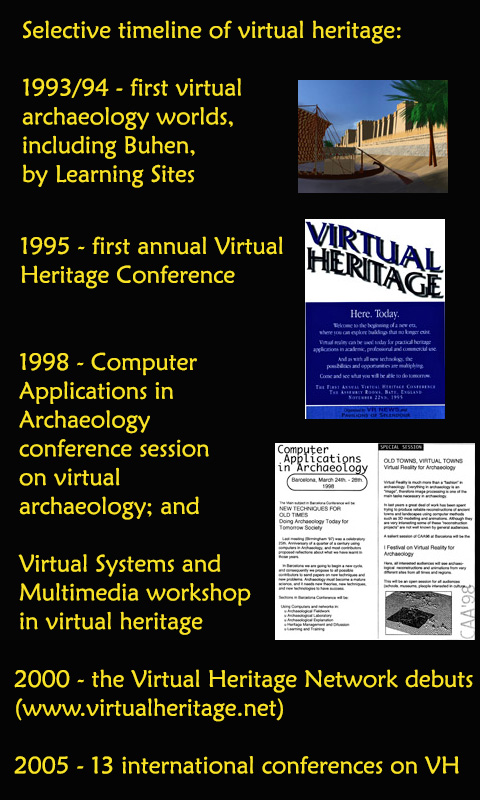 This quick snapshot (see the timeline at the left; hover over to enlarge) serves to emphasize the rapid pace of expansion in the use of VR in archaeology over a decade--1993/94 saw the first virtual archaeology worlds, but there were just a handful in the US and England, including one of ours, the fortress at Buhen; back then virtual worlds ran only on high-end systems with graphics cards the size of small refrigerators that cost $250,000 or more. In 1995, VRML was introduced for running interactive 3D content on the Internet; and the first annual Virtual Heritage conference was held, in Bath, England (where we showed our Buhen project). In 1998, the Computer Applications in Archaeology conference was held in Barcelona and featured a special session on virtual archaeology, resulting in Learning Sites' sponsorship of the Virtual Worlds in Archaeology Initiative, and the book Virtual Reality in Archaeology, edited by Juan Barcelo, Maurizio Forte, and myself; also in 1998, in Japan, the first Virtual Systems and Multimedia workshop in virtual heritage was held, co-sponsored by UNESCO. In 2000, the Virtual Heritage Network debuted on the Web, with its intelligent portal to news and information about the discipline. Now, in 2005, graphics cards in laptops are hundreds of times faster and have more memory than the originals that were thousands of times the price; and this year alone, there are 13 international conferences on VH, and hundreds of VH projects worldwide. In the meantime, we at Learning Sites and the Institute have worked on 31 archaeological and historic sites, across 10 countries, covering more than 60 buildings and other structures.
This quick snapshot (see the timeline at the left; hover over to enlarge) serves to emphasize the rapid pace of expansion in the use of VR in archaeology over a decade--1993/94 saw the first virtual archaeology worlds, but there were just a handful in the US and England, including one of ours, the fortress at Buhen; back then virtual worlds ran only on high-end systems with graphics cards the size of small refrigerators that cost $250,000 or more. In 1995, VRML was introduced for running interactive 3D content on the Internet; and the first annual Virtual Heritage conference was held, in Bath, England (where we showed our Buhen project). In 1998, the Computer Applications in Archaeology conference was held in Barcelona and featured a special session on virtual archaeology, resulting in Learning Sites' sponsorship of the Virtual Worlds in Archaeology Initiative, and the book Virtual Reality in Archaeology, edited by Juan Barcelo, Maurizio Forte, and myself; also in 1998, in Japan, the first Virtual Systems and Multimedia workshop in virtual heritage was held, co-sponsored by UNESCO. In 2000, the Virtual Heritage Network debuted on the Web, with its intelligent portal to news and information about the discipline. Now, in 2005, graphics cards in laptops are hundreds of times faster and have more memory than the originals that were thousands of times the price; and this year alone, there are 13 international conferences on VH, and hundreds of VH projects worldwide. In the meantime, we at Learning Sites and the Institute have worked on 31 archaeological and historic sites, across 10 countries, covering more than 60 buildings and other structures.
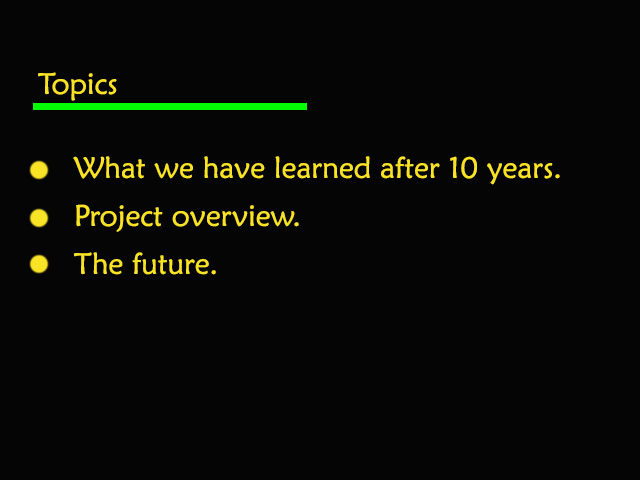 We have come a long way from the initial enthusiasm of just being able to create virtual worlds, to the integration of virtual reconstructions into public school education, museum displays, archaeological site visitor centers, digital publications, and television. Yet, still today, the process of building a virtual re-creation of an historical place or event demands skill, patience, and hard work. Using as examples several projects developed under my guidance at Learning Sites and the Institute, I'll discuss what works and what doesn't work in the creation of virtual worlds for cultural heritage. I'll conclude with some words about the future of interactive visualizations (hover over the image at the left to see the topics).
We have come a long way from the initial enthusiasm of just being able to create virtual worlds, to the integration of virtual reconstructions into public school education, museum displays, archaeological site visitor centers, digital publications, and television. Yet, still today, the process of building a virtual re-creation of an historical place or event demands skill, patience, and hard work. Using as examples several projects developed under my guidance at Learning Sites and the Institute, I'll discuss what works and what doesn't work in the creation of virtual worlds for cultural heritage. I'll conclude with some words about the future of interactive visualizations (hover over the image at the left to see the topics).
